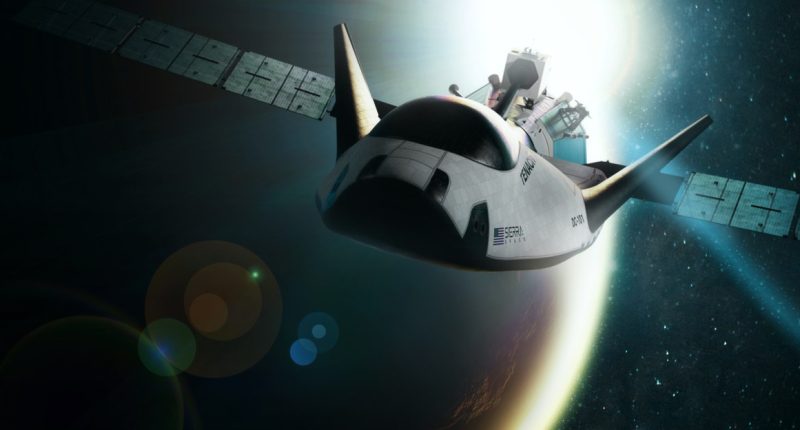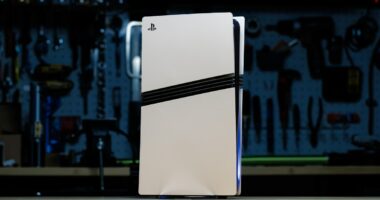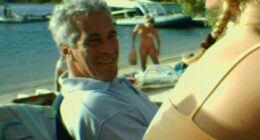Share this @internewscast.com
In The Andromeda Strain, Michael Crichton depicted deadly alien space crystals, which are (spoiler alert) eventually thwarted by the wide range of Earth’s pH values. However, in reality, crystals cultivated in space may hold the key to a new wave of cancer-fighting treatments that have the potential to save lives rather than endanger them.
Colorado-based startup Sierra Space is on the verge of launching its reusable space plane, Dream Chaser. It is slated to transport a 3-D printed module crafted by engineers at the pharmaceutical giant Merck into orbit. If the trial proves successful and Dream Chaser’s smooth reentry process manages to protect the delicate cargo, this could mark a significant breakthrough — even though the crystals in question are microscopic.

Image: Sierra Space
A brief history of space crystals
Space crystals might seem like something an astrology enthusiast might suspend over their bed to aid sleep, but there’s substantial science backing their importance. As per the ISS National Lab, crystals formed in space are typically superior: “Scientists theorize that these observed advantages are due to a slower, more uniform movement of molecules into a crystalline lattice in microgravity.”
Research into monoclonal antibodies points towards crystallization as being key for developing more stable, subcutaneous delivery mechanisms. Theoretically, expensive chemotherapy sessions could be replaced by injections that a patient could self-administer at home.
It’s the stuff of science fiction — and in the case of The Andromeda Strain, it literally is — but the truth is actually closer to Back to the Future. Space crystal research actually began in the early ‘80s, first on one-off rocket flights and eventually on the Space Shuttle.
Space crystal research actually began in the early ‘80s
There was much hope (and hype) about the tech back then, but it was ultimately stymied by two things. The first is cost. The Space Shuttle orbiter was to be America’s low-cost orbital research transporter, but that never panned out. NASA’s own per-mission costs pegged each flight at somewhere around $1.5 billion. That’s simply far too expensive, even in the pharma industry, where reporting quarterly profits often requires seven or more digits.
The rise of SpaceX and its competitors has brought those costs down substantially, lowering the cost of getting cargo into space to a relatively paltry $2,000 per kg. But that still leaves the other problem: shock.
If you’re going all the way to orbit just to grow some ultrafine structures, you don’t want to rattle them to pieces on the way back down.
“It’s about a 20 mph car crash equivalent into the ground,” Dr. Tom Marshburn said of the experience of landing in a capsule like Dragon. He would know. Marshburn is chief astronaut at Sierra and the company’s VP of human factors engineering, but before that he was a NASA astronaut. He’s flown on the Shuttle, Soyuz, and Dragon.
Sierra and its reusable Dream Chaser aircraft stand poised to fix both problems, cost and shock, in one fell swoop.

Those of us of a certain age will likely feel a sort of irrational affinity for Dream Chaser at first glance. Its black and white color scheme and simple, lifting body design give strong Space Shuttle orbiter vibes, but this is no retro design intended to earn throwback cred. Dream Chaser has some major advantages over Shuttle.
For one thing, it’s much smaller, about one-quarter the length. It fits neatly inside a payload compartment of a ULA (United Launch Alliance) Vulcan rocket, not requiring the messy combination of tanks, liquid and solid fuel boosters, and endless specialized hardware that stymied any hope the Space Shuttle had in being profitable.
It also doesn’t require a three-mile-long runway like the Shuttle. “It can do a precision landing anywhere a 737 can land,” Dr. Marshburn said.
”It can do a precision landing anywhere a 737 can land.”
The biggest change, though, is that it won’t fly with crew onboard. For now, at least. Dream Chaser was born out of the Commercial Crew Transportation Capabilities (CCtCap) contract, a competition that also included SpaceX’s Dragon capsule and Boeing’s Starliner capsule. NASA selected two winners, and Sierra Space was unlucky to place third.
However, seeing the potential, NASA offered enough orbital cargo contracts to make a Dream Chaser reboot worthwhile. A subtly redesigned space plane will launch and land as planned, just minus the people.
Why did NASA want to keep Sierra Space in the loop? Dream Chaser’s design offers some real benefits, particularly as we potentially enter an age of space manufacturing. “A capsule like a Dragon, by the nature of the physics, of the shape of it, can bring down only half of what it takes up,” said Meagan Crawford, founder and managing partner at SpaceFund, an early-stage venture capital investment fund with a focus on commercial space. “The space plane has the opposite physics, it can bring down twice as much as it takes up.”
An ideal orbital transport and manufacturing network, then, has a combination of the two.

That’s the potential. For now, the project with Merck is something of a proof of concept, a 3D-printed module containing a series of tubes, plungers, and capsules. Once it gets to the ISS, a willing astronaut will turn some valves in sequence, then the resulting concoction will be shuttled back to Earth for someone at Merck to examine.
And they’ll be able to do so quickly. Dr. Marshburn said that traditional reentry capsules like Dragon or Soyuz often spend days bouncing on boats or trucks before their cargo can be retrieved. Dream Chaser was designed for cargo to be offloaded within an hour after its wheels stop rolling.
The Merck module will test that quick retrieval, plus the soft landing, ensuring the potential for this sort of crystalline growth in space. And, though the ISS is itself set to be decommissioned by the end of the decade, Sierra Space is positioning its own inflatable orbital modules as a commercial alternative, free of the politics and oversight of the ISS.
Space Fund’s Crawford said that the economics are sound, and the proof is in the number of players trying to capitalize on the space plane market. Startups like Venus Aerospace, Radian Aerospace, Dawn Aerospace, and Virgin Galactic each have their own aircraft in development, with goals ranging from cargo to space tourism.
Space drug development has the potential to be hugely promising, but Sierra has a few other arrows in its quiver. It’s partnering with Honda to get a next-gen fuel cell into space, and those of you craving smaller and better processors could be in luck too. A startup called Space Forge plans to grow processor substrates in orbit, another area where gentle touchdowns are key. In shattering today’s mission cost barriers, Sierra Space might just blow through the semiconductor nanometer barrier, too.
There’s hope for one more type of cargo to come out of these missions. For now, Dream Chaser is relegated to transport only cargo, but the stumbles of the Starliner program could reopen the door to hauling humans.
“You see a winged body and of course, astronauts, especially test pilots, we want to be in that,” Dr. Marshburn said. “At any point, we’d be able to leverage the work that’s already been done to get that ready.”
If that does come to pass, it’ll take some time. Tenacity, the first Dream Chaser, is going through final checks at NASA, waiting for its chance to head to the ISS sometime later this year. The second, Reverence, is currently under production.
In other words: Watch this space.








